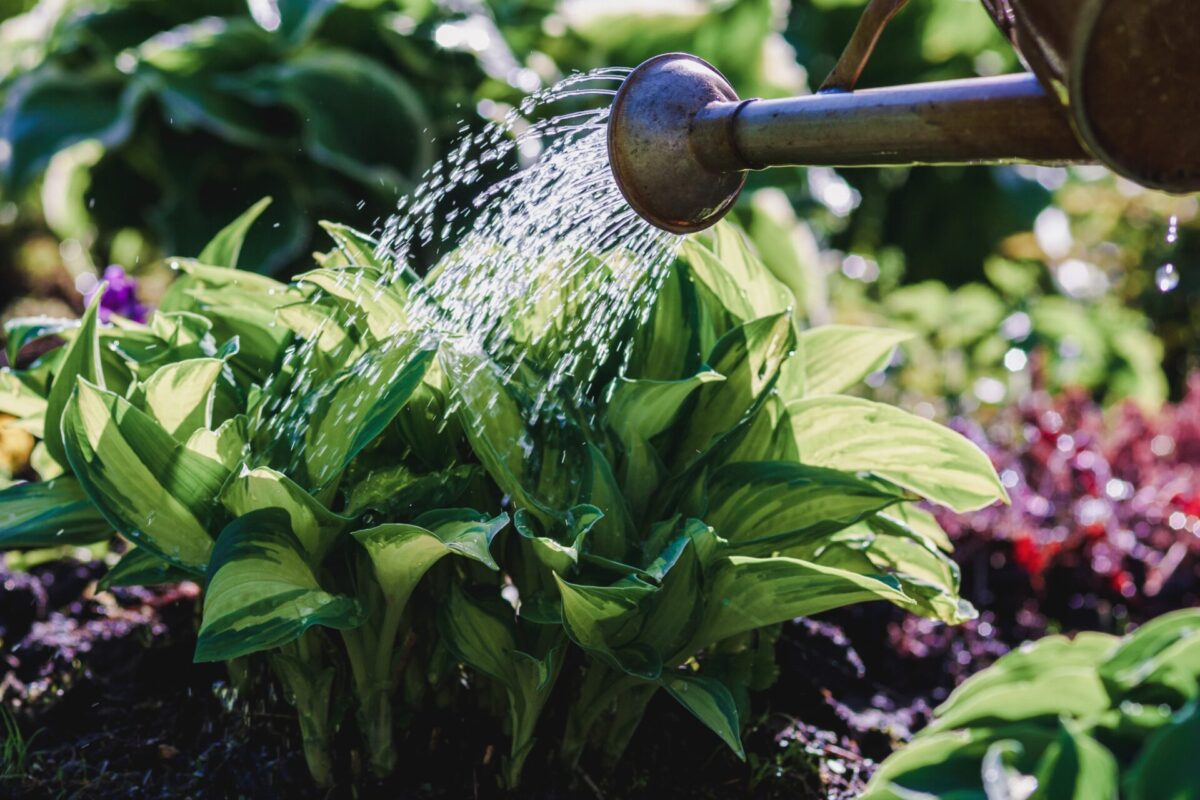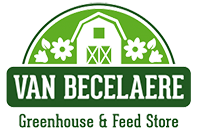Planting Hostas to Thrive During the Hot Weather Months in the Four State Region of Southeast Kansas

Posted on June 16, 2023 by Van Becelaere Greenhouse
Hostas are a popular and versatile perennial plant used in many landscape designs. They are trendy in hot climates, as they can tolerate extreme temperatures and still thrive.
That makes hostas a top pick for gardeners in the four-state region of Southeast Kansas who want lush foliage without having to worry about their plants wilting under the intense heat of summer. In today’s blog, we’ll discuss tips for planting hostas in hot weather, including:
- Best soils for hostas
- How to care for hosta plants during hot weather
- Common hosta pests and diseases
Tips for Planting Hostas in Hot Weather
Planting hostas in hot weather can be challenging. But these hardy little plants can easily get planted any time of the year as long as the ground is workable and temperatures are above 33 degrees Fahrenheit. Although, hot-weather gardening requires special attention to ensure your hostas get enough water and nutrients to grow.
Best Soils for Hostas
Hostas are a popular choice for gardeners looking to add an exciting and attractive plant to their outdoor space. But for hostas to flourish, they need the correct type of soil, which depends on several factors that include:
- Climate
- Weather conditions
- Soil prep
Ideally, hostas can grow in well-drained, moist soil with an ideal pH level of 6.2 to 6.8, which is between acidic and alkaline. Fortunately, the ground soil throughout Southeast Kansas is slightly acidic to neutral, with a pH level of 5 to 7.
That means you’ll need to do some soil prep before planting your hostas in the ground. In addition, you’ll need to do some research to determine the needs of the specific type of hosta you plan on planting, which may include:
- Select an ideal location with plenty of shade
- Dig a hole to a depth of 12 to 16 inches
- Till the ground, if necessary
- Remove any signs of weeds
- Mix in an organic matter or compost material
How to Care for Your Hosta Plants During Hot Weather
With the proper care and maintenance, hostas can survive even in the hottest summer months. Start by watering your hostas every other day to ensure the ground stays moist.
Also, mulch the soil around the hostas to a depth of no less than 2 inches, leaving at least a 2-inch space around the base of the hosta stalk. Replenish the mulching layer in late summer or early fall.
At the beginning of the following spring season, after the first hosta sprouts appear, apply a new 2-inch layer of mulch. Mulching your hosta plants will help them stay healthy, happy, and weed-free all season long.
In addition, you’ll only need to fertilize once annually in the Spring with a slow-release spike or granules of 10-10-10. These digits denote the amount of nitrogen, phosphorus, and potassium in a balanced all-purpose fertilizer for many plants and trees.
Time-release fertilizers are perfect for hostas because it ensures the plants don’t receive too much nitrogen, which can change the appearance of the hosta leaves—turning them brown and causing them to curl.
Common Hosta Pests and Diseases
Like many outdoor plants, hostas are vulnerable to pests and diseases during hot weather. Common nuisance pests are blister beetles, slugs, snails, and black vine weevils that can make an easy meal of your hostas by devouring the leaves and stem.
It’s best to treat plants at the first sign of leaf notching or holes in the leaves. Neem oil is effective against snails and slugs. But spreading diatomaceous earth can act as a sticky barrier against black vine weevils. At the same time, an all-purpose insecticide will work wonders at fighting off blister beetles.
In addition, hostas are vulnerable to fungal diseases that lead to leaf spots during those hot summer months. The top two most common fungi problems seen across Southeast Kansas are:
- Anthracnose
- Cercospora
In the mid-90s, hosta plants across the midwest were plagued with hosta virus X, also referred to as HVX. The problem has persisted across the region because it is easily transmitted by touching or using contaminated tools that come into contact with infected hostas.
Home gardeners must be aware of these common pests and diseases to immediately take steps to treat hosta plants to prevent severe or irreversible damage.
Contact Your Local Garden Center Near Pittsburg, Kansas
If you plan to plant hostas in the next few weeks, remember it will only take water and a couple of extra steps to give your hostas a great start. If you’re looking for healthy, well-cared-for hostas, and need good organic compost, mulch, or supplies to fight off disease or insects, stop by the Van Becelaere Greenhouse in Pittsburg, Kansas.
Their knowledgeable staff will help you find everything you need to nurture your hostas through the hot summer months. You can also place orders over the phone by calling them directly at (620) 231-1127.
